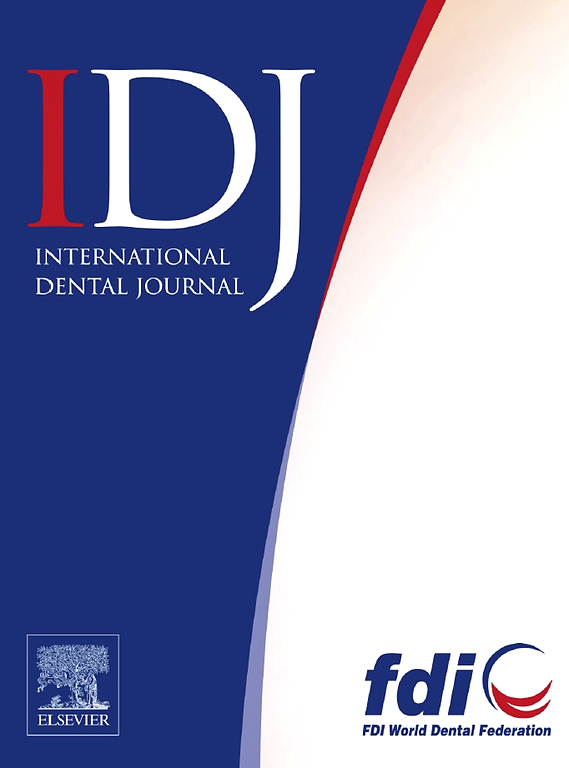Retrospective Analysis of 1093 Non-Syndromic Supernumerary Teeth From 782 Patients in Northwest China: Clinical, Radiographic and Epidemiological Insights
IF 3.7
3区 医学
Q1 DENTISTRY, ORAL SURGERY & MEDICINE
引用次数: 0
Abstract
Introduction and Aims
This study investigated the epidemiological, clinical and radiologic characteristics of non-syndromic supernumerary teeth (ST) using cone beam computed tomography (CBCT) and provided references for the clinical management of ST.
Methods
Clinical and CBCT image data from 782 patients (1093 ST) were collected. The age, sex and chief complaint of the patients, as well as the number, location, morphology, orientation, crown position, eruption status and complications of the ST, were recorded for analysis.
Results
The male-to-female ratio was 2.30:1. A single supernumerary tooth was observed in most cases (64.2%) and located in the maxillary central incisor region (89.3%). Most ST were conical, inverted, unerupted, palatally positioned and had complete root development. A total of 57.82% of the ST caused complications. About 53.45% of patients discovered ST by taking X-ray. Chief complaints varied significantly by age group (P < .05). Morphology, location, orientation, crown position and root development varied significantly by eruption status and complication type (P < .05). Location, morphology, orientation, crown position and eruption status varied significantly by region (P < .05). Significant differences in complications were noted among the different age groups (P < .05).
Conclusion
This study provides a reference for the clinical management of non-syndromic ST in children, emphasising the importance of early screening, precise diagnosis (particularly with CBCT) and personalised treatment. Clinicians should adopt comprehensive, stratified intervention strategies to optimise outcomes and reduce healthcare costs.
Clinical Significance
Our findings provide a comprehensive understanding of the characteristics of ST in children, offering new insights for clinical management.
回顾性分析中国西北地区782例患者1093例非综合征性多生牙的临床、影像学和流行病学资料。
前言与目的:本研究利用锥形束ct (cone beam computed tomography, CBCT)分析无综合征性多生牙(ST)的流行病学、临床及影像学特征,为ST的临床管理提供参考。方法:收集782例(1093例)患者的临床及CBCT影像资料。记录患者的年龄、性别、主诉,以及ST的数量、位置、形态、取向、冠位、出露情况及并发症。结果:男女比例为2.30:1。多数病例(64.2%)多生牙位于上颌中切牙区(89.3%)。大多数ST呈圆锥形,倒置,不爆发,腭位,根发育完全。总共有57.82%的ST发生并发症。约53.45%的患者通过x线检查发现ST。不同年龄组的主诉差异有统计学意义(P < 0.05)。萌牙状态和并发症类型不同,萌牙形态、萌牙位置、萌牙方位、萌牙冠位置和萌牙根发育差异有统计学意义(P < 0.05)。不同地区的牙冠位置、形态、取向、牙冠位置、出牙状态差异均有统计学意义(P < 0.05)。不同年龄组间并发症发生率差异有统计学意义(P < 0.05)。结论:本研究为儿童非综合征性ST的临床治疗提供了参考,强调了早期筛查、精确诊断(特别是CBCT)和个性化治疗的重要性。临床医生应采取全面、分层的干预策略,以优化结果并降低医疗成本。临床意义:我们的研究结果对儿童ST的特点有了全面的了解,为临床治疗提供了新的见解。
本文章由计算机程序翻译,如有差异,请以英文原文为准。
求助全文
约1分钟内获得全文
求助全文
来源期刊

International dental journal
医学-牙科与口腔外科
CiteScore
4.80
自引率
6.10%
发文量
159
审稿时长
63 days
期刊介绍:
The International Dental Journal features peer-reviewed, scientific articles relevant to international oral health issues, as well as practical, informative articles aimed at clinicians.
 求助内容:
求助内容: 应助结果提醒方式:
应助结果提醒方式:


